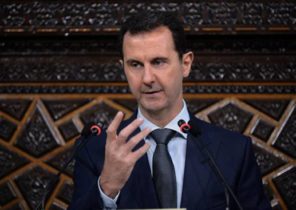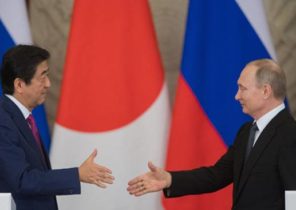In the weekend I received the results of the study, which was conducted by my youngest daughter and in the course of which she interviewed teachers and parents, finding out what they think about returning to school in the fall. Most parents and 60.5% from 2 thousand 455 people who participated in the survey — said they want their children attended school and studied full-time format. About a third of parents were in favour of mixed format. The other opposed face-to-face learning format in the fall of this year.
However, the most striking was the fact that, as shown by the results of the survey, the position of the teachers was very different from the position of parents: only 35.4% of the teachers responded that they would be quite comfortable or completely comfortable, if they return to face-to-face learning format. That is, distance learning and remote work format will stay with us for a long time.
It made me rethink the content of those casual conversations that I’m with the representatives of specialized firms dealing with investment analysis, with the managers of private capital from wealthy individual investors and large investment organizations. Obviously, they all pay attention to four aspects, which are best summarized in the Barclays report, prepared by economist Christian Keller (Christian Keller).
In short, a fiscal agreement in the European Union, incentives in the United States, geopolitical risks associated with doing business with China, and “Exodus from new York” will become integral parts of our lives immediately after the end of the pandemic. And when it happened.
“A significant shift” in Europe
The EU will not allow anyone to fail, so the government was good, approved by Germany’s balance sheet. Those days are gone. The agreement to Fund the economic recovery and the new seven-year EU budget, signed last week, was a welcome. Austerity policies in Europe officially came to an end. “This agreement marks a significant change in attitude, especially from Germany,” said Keller.
It is really so. Germany agreed to a more liberal fiscal policies at the level of individual EU member States, instead of insisting on the active balance. It is possible, Germany will cease to be a European country with a positive balance. This is a significant change. Angela Merkel has accepted it.
There is still the President of the European Central Bank Christine Lagarde (Christine Lagarde). Direct lending corporations at zero percent, and spontaneous compliance with fiscal policies “have no precedent,” wrote Barclays analyst Akash Utsav (Akash Utsav) in its report published on Friday, July 24.
This change of mood was reflected in Germany, where politicians have been able to prevent the Constitutional court of Germany to prevent the conclusion of the European Central Bank new deal at the quantitative stimulation. This is another important change in the way the EU does business.
Generous incentives in the United States
Senate majority leader Mitch McConnell (Mitch McConnell) has postponed the publication of a new package of measures to stimulate the economy this week after a dispute with the Democrats. This week they will have to hold new negotiations, which, judging by the headlines, are quite tense.
But don’t worry: everyone with whom I discussed this topic, agree that both sides want to declare that they help the Americans during the pandemic. One can not simply abandon negotiations and declare that everything is in order.
SARS-CoV-2 shattered the country’s economy. Business died. Many Americans have lost their wages, which aren’t coming back, and are now forced to find a new job. Some will have to accept jobs below their qualifications. From Loktionov affected more people than the coronavirus.
Analysts at Barclays suggest that a new package of measures to stimulate the economy will be about 1.5 trillion dollars and will be signed by trump on the 7th of August. This will allow to extend the terms quite generous unemployment benefits in the amount of $ 600 per week or $ 2,400 per month (actually it was a kind of “salary increase” for many Americans during a pandemic, fired with low-wage jobs in the service sector).
What does it mean?
It means that now in history that Washington helps only wall Street should appear in the footnote about the pandemic coronavirus, during which Main Street (working class, intellectuals and other taxpayers — approx. ed.) received such assistance from the state, which she had never seen before.
Now in times of crisis of such scale Main Street will always get financial aid, which will be at least equal to the amount paid by individuals or small businesses in taxes.
Meeting of the Federal open market Committee (Open Markets Committee), which will take place this week, is unlikely to significantly change the situation on the market. Any overstatement of the incoming data will not change the current guidelines, especially considering the fact that the pandemic continues to rage in many parts of the country, and some States are back in lockdown mode.
China: a new cold war
Allow me a short digression. On Sunday I went to the dump to recycle and discard ordinary household trash. I am familiar with administering our local dump — or whatever it is officially called today. I was told that China no longer accepts plastic, or rather certain types of plastic. What about the big plastic containers that are commonly used for storage of green or baking in the shops, people suggest just throwing them away. I was told that China no longer accepts them. But that’s a topic for another article. China is no longer interested in how to recycle our plastic. This is actually a pretty serious issue because of the trash and recyclable waste often become the primary export of America to China.
The closure of the consulates in Houston (the Chinese Consulate) and Chengdu (American) became another example of “separation”.
And last week, in his speech the US Secretary of state Mike Pompeo derisively called the China “hegemony”.
What’s going on?
Over the last couple of decades, China — with the blessing and support of the American multinational companies — have become a manufacturer of anything in the world: cranes, air conditioners, electronics, solar panels, turbines for wind generators, chemicals included in cleaning products such as Lysol, and so on. And, of course, the ubiquitous surgical masks, which are now worn by all. And equipment necessary for their manufacture is also produced in China and Taiwan.
China is an industrial hegemony, especially in Asia.
United States a technological hegemony. Now try to name a technology brand most likely, it will be the us: Facebook, Google, YouTube, Twitter, Amazon, Apple, Microsoft, Oracle. The whole world enjoys these products.
But China is catching up with America.
It Huawei is a leader in the field of 5G, not Cisco Systems, who focused on corporate clients. TikTok is the most downloaded app in the world. And these “Tick-Currents” will be more. Eventually there will be a lot of new Huawei, and when that happens, American technological hegemony will collapse. China will be the next technological hegemony, not British, not Russian and not Indian. All he need is semiconductors and nanotechnology, and the money he has plenty. I bet they achieve it sooner than any other developing market.
Last week, trump told the newspaper the founder of Barstool Sports, David Portnoy (David Portnoy), he’s no longer in awe of the so called bargains first phase, which he not long ago called “a great deal”. The public health crisis caused by a novel coronavirus, first discovered in the Chinese city of Wuhan, had him cornered.
If trump re-elected — though currently that seems unlikely — the deal is the first phase can fall apart. Apparently, markets expect to win Joe Biden, because, as expected, he will put an end to a trade war with China. Even if he does not cancel the existing tariffs, to increase them it will not be exact.
Some investors believe that the tension will remain, even with Biden.
“Tension grows into something akin to the cold war, creating a permanent line of division along which other economies may have to line up,” said Keller.
Pandemic and protests change the shape of the city
Life here is worth a fortune, and in moments of deep crisis you find yourself trapped in the apartment with an area of 80 square meters, the rent of which costs 2,500 dollars a month, and you now have to pay for the shipping of products, because in the only supermarket near to your house (because you have no car, and going down into the subway you don’t dare) ran out of toilet paper, paper towels and eggs. Why do you continue to live here? Definitely not late at night. Now everything is closed.
Pandemic and the ongoing civil unrest in cities such as new York, Portland and Seattle discourage people hunting to live in expensive, crowded cities. This is especially true of families with children who often have to pay for the education of children in private schools.
If you can work from home, why rent an apartment in SOHO?
Will be very interesting to observe how these changes unfold. This is already happening, but in this article I’m not going to list the many and varied manifestations of this trend.
However, new data confirm the emergence of these broader trends during the pandemic, especially in new York. Those new Yorkers who are lucky enough to have a real estate outside the metropolis, left Manhattan to ride out the crisis. Others bought houses on the East coast. Will they become second homes? Or these people will move to them permanently? While we do not know.
The report of the National Association of home builders (National Association of Home Builders) released last week showed that demand for new housing increases in the smaller urban areas and rural areas far from major cities. This is due to the fact that people want to have more spacious housing, want to stay away from current (and potentially future) urban chaos and can work from home from time to time making the trip to the city if necessary.
Most likely, in the future, after the pandemic, people will be more likely to permanently leave the large cities, where life is very expensive. And they will not leave just because of exorbitant rents and taxes. They will leave, because to be in Manhattan at the time of the crisis, with no end in sight — it’s awful.
“The downward trend of spatial concentration, along with a potential suspension of the previous trend of a smooth moving from state to state are, from our point of view, the new trends of the pandemic, wrote Keller. — This can lead to more sustainable changes in the structure of the global economy”







